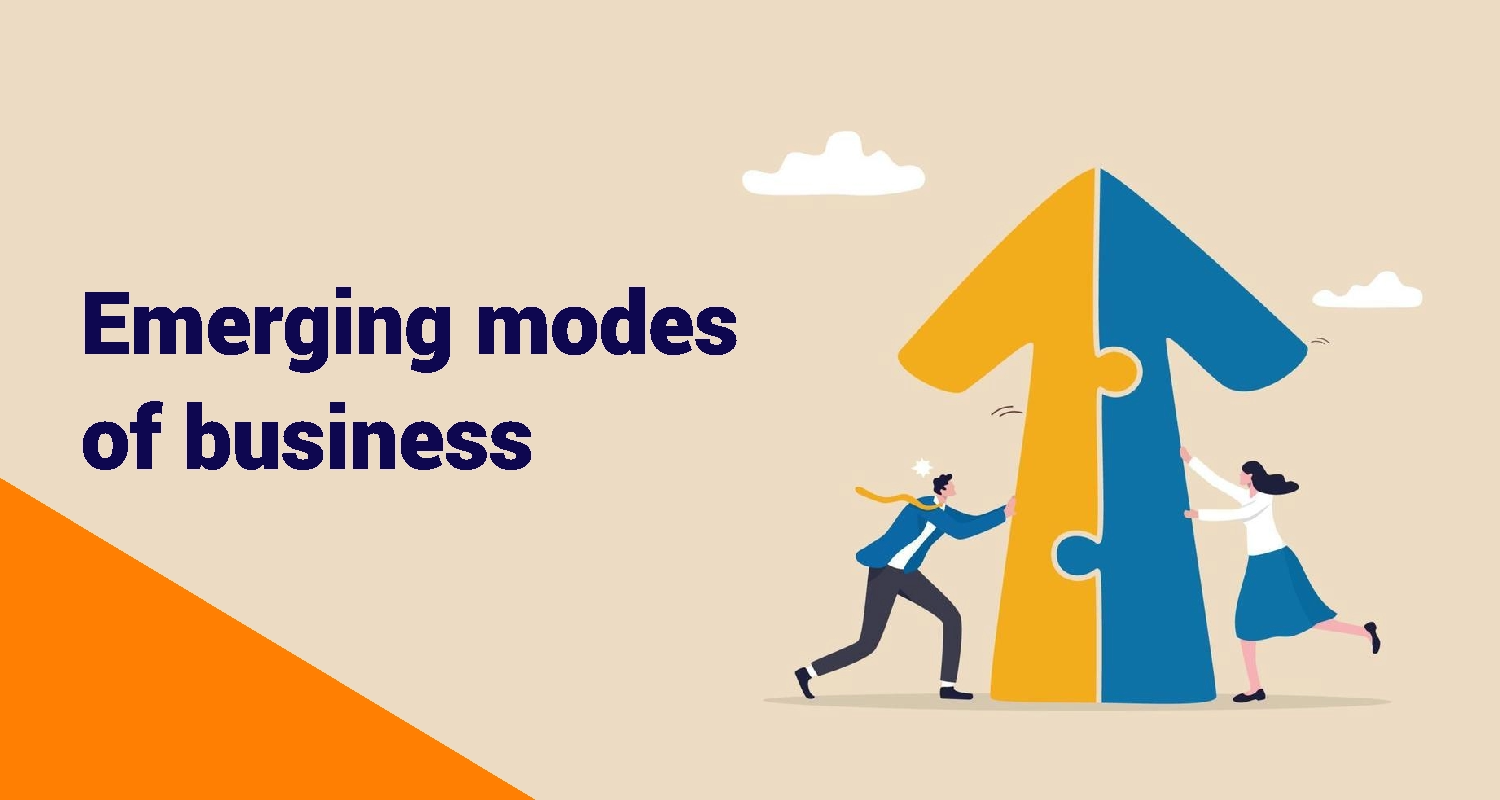The landscape of commerce is being reshaped by emerging modes of business that leverage digital technologies. These innovations not only enhance efficiency but also create significant opportunities for entrepreneurs worldwide. Let’s explore the types, scope, and benefits of these emerging business models.
What are the Types of Emerging Modes of Business?
The advent of digital technologies has introduced several innovative business models. Here are the primary types:
1. E-Business
E-Business encompasses all business activities conducted online, including buying and selling goods and services. This model involves various functions such as payment processing and production control, all facilitated through the internet. E-Business is a broader concept compared to e-commerce, which focuses specifically on online transactions.
2. E-Commerce
E-Commerce refers to the interactions between businesses and consumers over the internet. It includes B2B (Business to Business), B2C (Business to Consumer), C2C (Consumer to Consumer), and more.
3. B2B Commerce
B2B (Business to Business) involves transactions between business firms. The integration of the internet has streamlined tasks such as order placement and payment handling, thereby improving efficiency.
Example: IndiaMART connects manufacturers and suppliers with businesses needing products across various industries.
4. B2C Commerce
B2C (Business to Consumer) involves businesses selling directly to consumers. This model encompasses marketing, promotion, and the delivery of products.
Example: Flipkart caters to millions of consumers with a wide range of products.
5. Intra-B Commerce
Intra-B Commerce involves electronic transactions within an organization using intranets for internal management and operations.
Example: Tata Steel’s internal procurement system allows various departments to manage orders and inventory efficiently.
6. C2C Commerce
C2C (Consumer to Consumer) refers to transactions where consumers sell directly to other consumers, often facilitated by online platforms.
Example: OLX allows individuals to buy, sell, or trade goods directly with each other.
Scope of E-Business
The scope of E-Business is vast, enabling nearly all business functions to be performed online, including:
- B2B and B2C Transactions
- Intra-B operations
- C2C marketplaces
These functionalities enhance communication and streamline processes across the supply chain.
Benefits of E-Business
- Ease of Formation and Lower Investment: Starting an e-business typically requires less capital than traditional businesses.
- Convenience: Online operations allow businesses to operate 24/7, providing services anytime and anywhere.
- Speed: The digital environment facilitates faster transactions and communication, reducing the time from demand to fulfillment.
- Global Reach: Businesses can access international markets without the need for physical presence, allowing for greater customer reach.
- Movement Towards a Paperless Society: E-business reduces dependence on paperwork, streamlining operations and minimizing environmental impact.
Industries Impacted by Emerging Modes of Business
E-commerce and Retail
- Transformation of Shopping Experiences: Platforms like Amazon and Flipkart have revolutionized consumer shopping habits.
- Omnichannel Retailing: Companies like Reliance Retail integrate online and offline services for a unified shopping experience.
Manufacturing and Supply Chain
- Automation and IoT Integration: Smart factories are becoming standard, enhancing efficiency.
- 3D Printing: Accelerates production and reduces costs in industries like automotive and healthcare.
Financial Services
- Fintech Revolution: Companies like Paytm and Razorpay are transforming payment solutions and lending.
- Blockchain Technology: Enhances transparency and security in financial transactions.
Healthcare
- Telemedicine: Platforms like Practo are making healthcare services more accessible.
- Wearable Technology: Devices enable real-time health monitoring, improving patient care.
Education
- E-Learning Platforms: Services like BYJU’S offer flexible learning opportunities.
- AI and Adaptive Learning: Personalizes education to fit individual student needs.
Logistics and Transportation
- On-Demand Services: Companies like Uber and Ola revolutionize transportation.
- Drones and Autonomous Vehicles: Emerging technologies are beginning to reshape delivery services.
Opportunities for Entrepreneurs
Emerging modes of business lower barriers to entry and provide innovative ways to engage customers. Here’s a summary of these opportunities:
| Opportunity | Description | Examples |
|---|---|---|
| Lower Entry Barriers | Technological advancements reduce obstacles for new businesses. | Shopify allows easy online store setup. |
| Reduced Initial Capital | Digital platforms enable startups with minimal upfront costs. | E-commerce platforms like Shopify. |
| Access to Global Markets | Reach international customers without a physical presence. | Amazon Global Selling for Indian sellers. |
| Freelance and Gig Economy | Platforms like Fiverr connect freelancers with clients globally. | Upwork for various freelance services. |
| Crowdfunding Platforms | Raise capital directly from consumers. | Kickstarter for project funding. |
| Innovative Customer Engagement | Unique approaches using technology to enhance customer experiences. | Jabong’s virtual try-on feature. |
| Personalization through Data | Tailored marketing strategies based on customer data. | Netflix’s personalized content recommendations. |
| Social Media Marketing | Cost-effective ways to engage target audiences. | Instagram and Facebook Ads. |
| Omnichannel Engagement | Seamless online and offline experiences enhance brand loyalty. | Nike’s integrated shopping experiences. |
| Interactive Content and VR/AR | VR/AR technologies create immersive customer experiences. | Lenskart’s virtual try-on for glasses. |
| Subscription Models | Recurring revenue streams foster customer loyalty. | Zomato Pro for food delivery discounts. |
Conclusion
Emerging modes of business, such as e-commerce and the gig economy, are reshaping how companies operate. Adapting to these trends is crucial for maintaining competitiveness in today’s fast-paced market. Businesses must embrace these changes to ensure future growth and success.

Leave a Reply